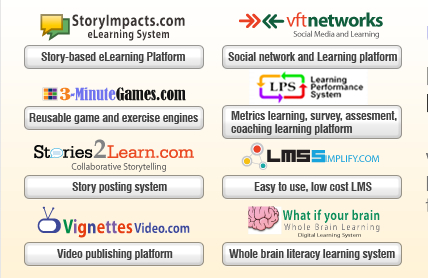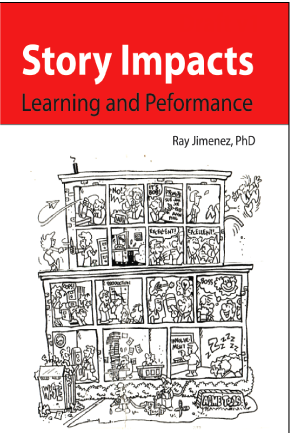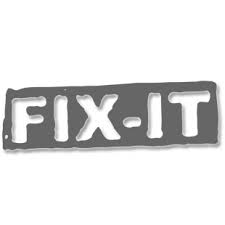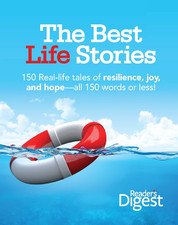 Neal Gorenflo, co-founder Shareable Magazine, a nonprofit online magazine about sharing, and Malcolm Harris, senior editor of the New Inquiry, have just released Share or Die, an anthology with stories by recent graduates and twenty-something experimenters “who are finding (and sharing) their own answers to negotiating the new economic order.”
Neal Gorenflo, co-founder Shareable Magazine, a nonprofit online magazine about sharing, and Malcolm Harris, senior editor of the New Inquiry, have just released Share or Die, an anthology with stories by recent graduates and twenty-something experimenters “who are finding (and sharing) their own answers to negotiating the new economic order.”
Because the nonprofit Shareable is dedicated to (as you might expect) sharing, Shareable offers the book for free online here under a Creative Commons license.
The creators have also given permission to publish credited excerpts; I chose the one below because it reminds me of the dilemma that faced many of my former students. I left on-ground teaching in 2007; many of my students graduated the next year, 2008, when the bottom fell out of the economy. While many hatched creative solutions – starting businesses, teaching English overseas – others struggled with protracted job searches, took low-level retail and server jobs, or decided to become single parents.
This excerpt describes the struggle that Millennials have faced these past few years but offers hope of a way out.
An excerpt: Unprepared: From Elite College to The Job Market
I’ve lived in Chicago, first as a student, then as a working resident, for six and a half years now. But I didn’t vote in the pivotal mayoral race held here recently.
I still list my parents’ address in Pennsylvania as my “permanent address” on anything requiring one.
I don’t have health insurance through my employer, a travel company in downtown Chicago, because I’m still on my Pennsylvania plan, even though I’ve worked here for nearly three years.
I don’t have a dentist here. Or an opthalmologist. I’ve never even been to the new primary care physician I selected through my insurance.
And I still hold a Pennsylvania driver’s license.
Why is this? The answer is fairly simple: I still don’t consider myself a full-fledged resident of Chicago. But the reason for that is a bit more complicated.
In high school, I was smart. Really smart. I knocked out A’s like I was baking cupcakes. Teachers loved that they could count on me. But I was small-town, public-school smart, the kind of girl genius who plows through her secondary education without too much resistance. Deep down, despite my excellent grades and my involvement in a bunch of extracurricular activities, I knew that I hadn’t been challenged enough to be as cocky as I was. When it came to college, I had two options: I could play it safe, stay close to home and go to school in Pittsburgh where I would benefit from the “big fish in a small pond” effect. Or I could take a leap and accept my offer of admission from the University of Chicago.
The prospect thrilled and terrified me. Everything the school promised sounded utopian: the academic rigor, the immersive intellectual energy, the dense core curriculum filled with great books that sparked constant meaningful discussion. But the school also prominently promised on all of their prospecting materials to challenge me. They said they would force me to defend myself and the positions I took, that they would force me to think deeply, to see all the angles. I knew I’d been handled with kid gloves so far, and that Chicago would be an insane leap outside of my comfort zone. Not to mention the shock of being so far away from home (what was this alleged “Midwest?”) in a place where I knew virtually no one.
But in the end, I decided: nothing ventured, nothing gained. I flopped like an enthusiastic mudfish out of the small pond and into the lake.
Now, like anything, school had its ups and downs. Not every class is inspiring, not every teacher is interesting, and, of course, not every assignment will take precedence over a new and interesting social life. But ultimately, it would be nearly impossible to count the ways in which I benefited from my education (much, in the end, thanks to that social life). I was, as I suspected I would be, somewhat behind from the start, and the learning curve was steep. Most of the time those first two years it felt like just about everyone I met was a genius. My friends were brilliant. My classmates were all well-read and eloquent. I was so green and, I thought, underprepared. I had an embarrassing moment during a movie night with my new dorm-mates when I revealed I didn’t know what NATO was. Despite what a guidance counselor might have thought from my high school transcript, I didn’t have the natural ability or aptitude for the University’s rigorous academic and intellectual life; I had to learn it. But surrounded by and in the constant presence of people as smart or smarter than me, exerting their influence in class, at dinner, hanging out in someone’s dorm room, everywhere I was in contact with other people, I learned quickly. It was like taking up a foreign language through immersion.
Eventually, I got more comfortable with the rhythms of things. I learned to ask questions, to read carefully, to be inquisitive, to poke around in all of the dark corners of a text or a thought and to follow the strands of thought wherever they may lead. I felt like I was aging in dog years, absorbing more, learning and maturing more quickly than I literally could have imagined possible for myself. But that kernel of insufficiency planted there in the beginning still never goes away. It changes shape, maybe, becomes something slightly different, but it instilled in me a driving force, my raison d’etre: to be better, and to learn more. Constantly and forever. My life’s quest became and has remained the struggle for self-improvement through knowledge. Because learning, truly learning, is like cracking open the door to a universe: once you’ve experienced it, everything else spreads on and on right before your eyes. The more you learn, the more you find to learn. You can never know enough. I had found what people go to college to find: direction.
Unfortunately for me and my fellow classmates, the culture of learning is not necessarily compatible with the culture of the market. I was an English major, and not one who was diligent seeking internships while in school. My expertise was literary analysis. What I considered to be probably my highest achievement was my exploration of Milorad Pavić’s postmodern hypertextual novel Dictionary of the Khazars, for which I found myself researching and downloading examples of the obscure genre of hypertext fiction (way bigger in the 90’s) and writing about the subjectivity of names and definitions, the existential crisis of reading a book without its own narrative velocity, and the futility of the self-guided attempt to achieve simultaneity of all the information in the text. Who wouldn’t want an employee who could do that?
Of course, the thing I hadn’t yet faced was that my literary skill would not directly translate to a job. The ideals I had internalized and learned to dedicate myself to made me the kind of University of Chicago student they let rave in the brochure, but they weren’t the same skills I would need to survive in the real world.
“The real world” as an expression is apt. For all of my feverish intellectualism, I was in a charmed environment. Perhaps it was a necessary part of my education, but college functioned as a protection, a safe haven, a free pass of sorts, and it did not reflect the reality of life outside of it. For me and my classmates, the transition was destined to be particularly difficult. We had less warning than most other people; we had so much less time and energy to spend focusing on the future. The kind of education I got, priceless though it was, is tricky to spin into a proper post-college career even in the best of economic times if you don’t have a sense for where you’re going once you step outside. I did not have that sense. Most of my friends, largely students of the humanities and/or theater, didn’t either.
Inevitably, the clock ran out on us all. Graduation rolled around and dumped us on the other side, where we were within grace periods for our student loans but not for long. A life philosophy of inquiry and a fairly elite diploma didn’t protect us from the immediate exigencies of rent, jobs, and stress.
I knew I was at a disadvantage, not having the same career-boosting professional degrees some of my more technically minded peers had. Like my friends, I had a world-class education and ambitions to be great, but only the vaguest of ideas about what I even wanted to do.
Some people, though no one I was close with, were fortunate enough to have parents who were able and willing to foot the bills for a grace-period of post-college finding oneself. The rest of us had to do it on the fly, scrambling for work in what we knew was a quickly deteriorating economy, while trying to work out what sort of path we wanted for ourselves. The word “job” was precious enough; the word “career” seemed outlandish, absurd, almost unseemly. My ambitions had shrunk alongside my options; we went from expecting greatness to expecting respectable work to hoping for something that paid.
I was naïve about the real world much in the same way that I was naïve about academic life. I searched for jobs primarily on Craigslist. I didn’t know what to do with my resume. I only had enough money from my graduation gifts to last a couple of months unemployed in Chicago; after that, it would be back to suburban Pennsylvania. Looking at job postings, I realized I had no idea what I was even looking for. Jobs were scarce, let alone appealing gigs. Furthermore, I was totally unqualified, based on the advertised requirements, for anything but clerical administrative work. All that I had learned, all that I had overcome and accomplished, and here I was scanning dozens upon dozens of ads looking for the rare few with the words “administrative assistant” in them.
Not knowing what else to do, not having any clue or any direction, feeling the hot breath of unemployment breathing down my neck, I applied to all of them.
I managed to get lucky – and despite my degree, it does feel like luck. I had a job by July, one of the applications for which I had, by this point tired and getting lazy, attached my resume to an email and just dashed off a paragraph in the body about how great and bright I was. This is the same job I still have now, almost three years later—a gig at a small travel company typing and printing travel documents for unbelievably wealthy, entitled globetrotters who won’t read any of them. This was about as far from the highbrow literature of my undergraduate years as construction work. I was terrified to start an actual 9 to 5 job; it seemed like a myth, something surreal, something that couldn’t touch my life.
After starting, the disbelief soon gave way to misery. The day-to-day experience left me feeling utterly crushed. I wasn’t creating anything, I wasn’t even really doing anything of any consequence at all. I got on the bus every morning, exhausted, with all the other people who worked in offices downtown. I walked into the office every day, sat at the same desk, in the same chair, did the same things. I adopted the same bubbly, pleasant attitude as my coworkers, with whom I felt no connection at all. It made no sense to see them as real people I might connect with, since after all, I felt like this was not where I belonged: an office in an industry that had nothing to do with my life, in a job in which I had no real interest. I had nothing invested in my job or my employer, I did what I had to do: hammer out the work, play nice. But I felt all day long that I was inhabiting a strange bubble, separate from where I really lived my life, removed from anything that affected me or that I cared about.
But the bubble expanded to fill such a large part of my days that I started to despair. During office lunches, when I sat at the conference table eating pizza while my coworkers talked about the best time during the week to pick up ornamental plants at Home Depot, I sometimes felt so detached that I saw myself hovering above the table, watching the me sitting below. I was an alien who had just woken up in a strange place with a broken compass. Several nights in the first few months I came home, took off my coat, sat on the couch, and starting sobbing inexplicably and inconsolably. I had crying jags in the bathroom at work. I was falling into a dark hopelessness. I hadn’t read a book or written anything new since before graduation. I finally started to appreciate why TV is so popular: when you’re working a day job who has the energy or will to do anything more at the end of the day than collapse on the couch with a bag of chips and an NCIS rerun? I gained fifteen pounds in six months.
And still, I did not leave my job.
It sounds like stupid or self-destructive behavior. I was suffering. I was miserable. For my own good, I should have left long before now.
But I stayed because I was too terrified to leave. The economical situation was bleak and not improving. All I had to do was look around at my friends, the best and the brightest, to see it. One woke every day at four in the morning for the morning shift at Starbucks, trying to get enough hours every week to make the minimum for health insurance. One interned in local government, but afterward was forced to take up his old job at the zoo. One had to move back with his parents in Iowa. Several waited tables. Two toiled miserably in low-level jobs at law firms. Out of everyone I knew, there was only one real success story—only one person who secured a job in the appropriate field that set her on the career path she wanted. More school was an option for the shell-shocked or potentially so; my boyfriend took refuge in another year. One friend defected to grad school in Austin, Texas. Everyone seemed to be in the midst of the application phase at any given time, working on getting into grad school for something or other, anywhere but here, anywhere but the real world, where there was no work, and even less fulfilling work.
My job was almost insultingly low-paying, and I was living paycheck to paycheck, as we all were, cutting it too close to quit with no other offers. When I got home, I trolled the web for hope of better opportunities, but jobs were so few that I found just about nothing, and certainly nothing that I would want to do more than what I was already doing. I was interested in the arts, but with the economy tanking and arts funding even more constricted than in normal lean times, a paying job was a far-off dream, and I couldn’t afford to do an unpaid, or even low-paid, internship.
It was jarring. Not just for me, for all of us. It seemed to make so little sense. The banal necessities of the actual struggle for survival in the world were at odds with our sense of the world as some kind of meritocracy brimming with possibilities for genuine intellectual growth, a place whose purpose is to provide those opportunities. Having been bestowed with the unquenchable need for knowledge that we all had worked hard to develop, we had also acquired a unique capability for dissatisfaction—something most of our parents had never had the luxury to experience, especially so acutely and so early in life. This dissatisfaction is a luxury, but also a curse. My peers and I, perhaps sometimes even despite ourselves, believe in the higher purposes we learned in class, the value—sacredness, even—of knowledge, inquiry, curiosity, justice, the pursuit of truth. If we can be said to have a collective moral compass, that’s what’s in it. My friends and I trust in the values our liberal arts education set out and succeeded to instill in us. But sitting in an office typing away meaninglessly? How were we supposed to understand that as part of the world we had imagined, or had been taught to imagine?
This disconnect made me think I might be going insane. Like my head had been metaphorically severed from my body. The realization that I had little beyond my job to fill my days and justify my existence terrified me. Was this who I was now? A stranger to myself, typing away inconsequentially in an office somewhere in the West Loop, with no bright shining future?
I felt stranded, lost, paralyzed. And I resisted dropping anchor in a place so toxic. My attitude toward my work was distanced; it was impossible to develop any feelings of loyalty or any desire to chase upward mobility or permanence when I couldn’t stand the thought of actually caring about such a dull job. I remained unsettled, like a nomad pitching a tent on fallow ground, refusing to get too comfortable. It was bad enough that I was totally rudderless, that I had no clear professional aims or goals to speak of, but add to that what had become our culture’s collective recession-fueled terror—I couldn’t even say how many times I heard the warning, “At least you have a job”—and you have a bona fide total inability to climb out of my rut. Unable to keep the nine-to-five levees in tact, my work situation had metastasized into a very miserable work/life situation. The expansive, freeing sense that I had once felt, seemingly lifetimes ago, that my life’s possibilities were endless had shrunk down to the size of a pinhead. The area of possible movement seemed to be so very small, not just for me, but for all of us. We still wanted great things, but they seemed so impossibly distant, so indulgent, when the basic fact of work wasn’t even a given.
Everything we wanted, everything we really valued, was offset by the reality of “normal,” traditional work. We had no idea how to navigate this world, but our education didn’t fail us—it instilled in us a dissatisfaction for this kind of life.
I didn’t have the confidence to go searching for personal success. I had the momentum, the take-the-bull-by-the-horns wind, sucked right out of my sails. For almost three years the kernel of dissatisfaction has grown inside me while I allowed the things I truly valued to be subsumed by the empty immediacy of survival. I doubt we will see the full effects on this generation for decades to come, when we’ll start to understand just how far-reaching the tentativeness that has developed within us these last few years really is.
But now I’m preparing to take another leap, just like I did when I went away to college. I’m going to try to marry the ideals I am so loyal to with the very same life necessities that generated my stagnancy and depression. I want to integrate the spirit of inquiry and the pursuit of knowledge into the way I make my living and create my own version of the real world—a lesson I never learned in school, and for which I have absolutely no blueprint. Again, I enter a new situation underprepared, but optimistic that my capacity for dissatisfaction will actually me well this time as a trustworthy guide.
I’m planning to leave Chicago this summer to start over. I’ll move somewhere where I can finally put my feet on the ground: grow roots, get a new driver’s license, get a new permanent address. I want to make friends and build a community with interests deeper than the potted plants at Home Depot. The goal is to stop feeling like such a listless wanderer in the story of my own life. Maybe I’ll even find a new dentist.
This essay appears in the new Shareable ebook collection Share or Die, which is now available in downloadable and free online forms. For the next article (cartoon!) in Share or Die, Emi Gennis’s “Quitter”, click here.
 She also notes that the Atlantic Philanthropies has launched a Stories of Impact section on its website, featuring written and videotaped stories gathered and produced by Thaler Pekar & Partners.
She also notes that the Atlantic Philanthropies has launched a Stories of Impact section on its website, featuring written and videotaped stories gathered and produced by Thaler Pekar & Partners. Story to Make a Difference, have a lively new blog. (I wrote about the authors’ participation in last year’s Reinvention Summit here.)
Story to Make a Difference, have a lively new blog. (I wrote about the authors’ participation in last year’s Reinvention Summit here.)









